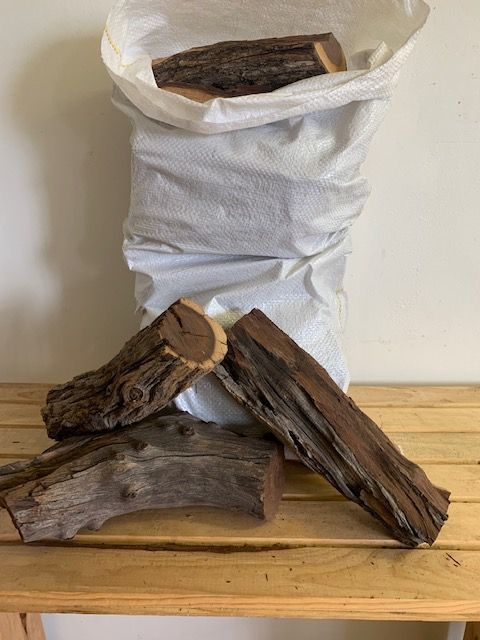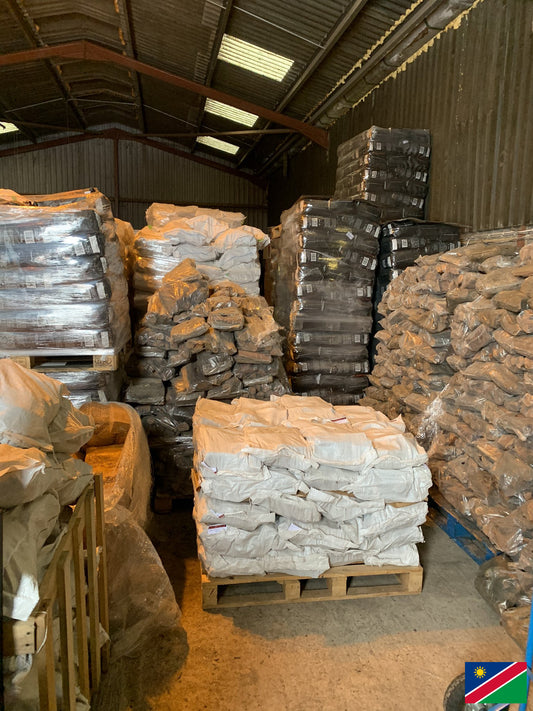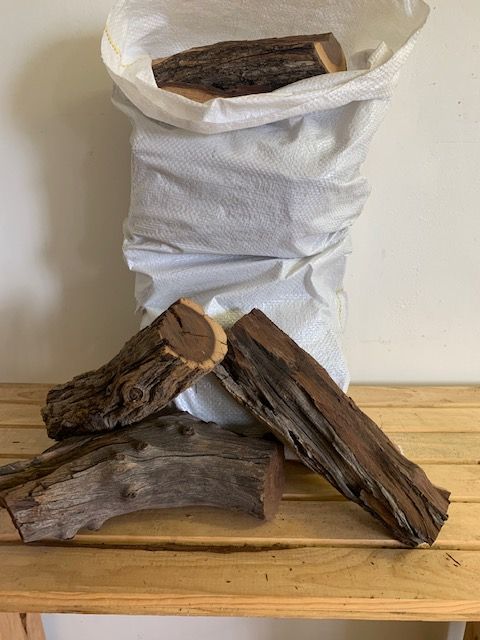Collection: Products
-
Premium Hardwood Logs
Regular price From £11.50 GBPRegular pricePremium Hardwood Logs
Regular price From £11.50 GBPRegular pricePremium Hardwood Logs
Regular price From £11.50 GBPRegular price -
Premium Hardwood Logs (12 bags or more at £9.50 per bag)
Regular price £114.00 GBPRegular price -
Premium Hardwood Logs (24 bags or more at £9.25)
Regular price £222.00 GBPRegular price -
Premium Hardwood Logs (48 bags or more at £8.75 per bag)
Regular price £420.00 GBPRegular price -
Premium Hardwood Logs (6 bags or more at £10.00 per bag)
Regular price £60.00 GBPRegular price
Why use our Namibian logs?
🌍 European vs. Namibian Firewood
What You Need to Know!
European Firewood: Hidden Drawbacks
Lower Density:
European logs like Oak and Ash are significantly less dense (around 600–700 kg/m³) than Namibian hardwoods. This means they burn faster, produce less heat, and require more frequent refueling.
High Moisture Content:
Most European firewood contains 20% or more moisture, especially on the inside. Before producing heat, the fire must first evaporate this water, wasting energy and reducing burn efficiency.
Dirty Burn:
That excess moisture causes the firewood to release steam, smoke, and soot. This leads to tar and creosote buildup in chimneys, dirty glass on stoves and fireplace doors, as well as the need for frequent cleaning and higher maintenance costs.
Pollution Risk:
Although technically “smokeless” by legal standards, the early stages of burning can still release carbon volatiles and visible smoke, contributing to indoor and outdoor air pollution.
Shorter Burn Time, More Wood Used:
Because of the low density and high moisture, European logs burn out quickly—so you use more logs to get the same warmth, increasing costs and effort.
Namibian Firewood: The Superior Choice
Low Moisture Content:
Namibian firewood contains as little as 1% moisture—virtually dry. This allows it to burn cleanly and efficiently from the moment it's lit, with no energy wasted evaporating water.
Clean Burn:
In modern secondary burn stoves, Namibian firewood produces minimal steam and smoke, resulting in no tar buildup in chimneys. In fact, it burns so cleanly that it can help keep your fireplace and flue cleaner over time, reducing maintenance and increasing safety.
High Density:
With densities up to 1200 kg/m³, Acacia firewood from Namibia lasts longer and burns hotter than European varieties like Oak or Ash. That means more heat, less wood, and better overall value.
Cost Efficiency:
Despite superior performance, Namibian firewood is often cheaper. Its high efficiency means you use less wood, and its lower import cost per unit adds to the savings.
Environmental Impact:
Though sourced from afar, Namibian firewood is shipped via large container vessels, which are more carbon-efficient than the smaller trucks or vessels often used in Europe—giving it a surprisingly low carbon footprint.
🌱 Namibian Firewood: A Sustainable Choice That Gives Back
In today’s world, where environmental responsibility matters more than ever, your choice of firewood can make a real difference. Namibian firewood, sourced from invasive Acacia species, offers an eco-friendly and socially impactful alternative that supports both the environment and rural communities.
🔄 Combating Invasive Species & Restoring Ecosystems
Namibia faces a growing challenge with invasive Acacia bushes, which consume precious groundwater and overwhelm native vegetation. These aggressive species degrade valuable grazing lands, making it harder for local farmers to sustain their livestock. By harvesting these invasive plants for firewood, we actively reduce their spread, helping to restore ecological balance. This process allows native plants to regenerate and improves the overall health of the land. Rehabilitating the landscape also benefits local agriculture by enhancing the quality and availability of grazing areas, leading to healthier livestock and more productive farms.
🤝 Empowering Rural Communities
The Namibian firewood industry is more than a source of energy—it’s a source of hope for rural communities. In regions where poverty is widespread and jobs are scarce, the firewood trade creates meaningful employment through harvesting, processing, and distribution. This work provides families with reliable income that helps them access better education, healthcare, and basic necessities. Every bundle of Namibian firewood purchased directly supports these communities, contributing to long-term economic development and improved living standards.
♻️ Smarter Land Management, Lower Emissions
Traditionally, the removal of invasive bush in Namibia has relied on slash-and-burn methods, which release large volumes of carbon into the atmosphere and severely damage the soil. Converting this bush into firewood or charcoal offers a more responsible alternative. This approach reduces carbon emissions by avoiding open burning, and it also preserves soil health by leaving the land in better condition for future use. By choosing firewood sourced from invasive species, we promote sustainable land use and cleaner, more efficient energy solutions.
🚢 Importing vs. Impact: Rethinking the Carbon Footprint
While it may seem that local firewood is always the greener choice due to shorter transport distances, this isn’t the full picture. Firewood transported locally often travels by smaller vehicles or vessels that emit more carbon per tonne. In contrast, Namibian firewood is shipped in large container vessels, which are far more efficient in terms of emissions per unit. More importantly, choosing Namibian firewood helps avoid the environmentally destructive slash-and-burn practices used to clear invasive bush. When you consider the bigger picture, the environmental benefits of supporting this sustainable supply chain far outweigh the minor transport-related emissions.
🔥 A Fire That Warms More Than Your Home
Burning firewood will always be part of how homes are heated and meals are cooked. The difference lies in what you choose to burn. Namibian firewood gives you the opportunity to heat your home while actively supporting ecosystem restoration, empowering rural communities, and reducing your overall environmental impact. It’s not just a better firewood—it’s a better future.



